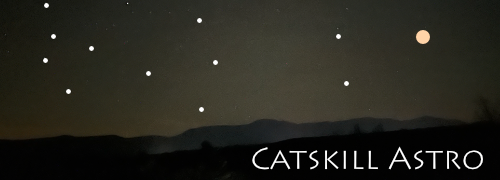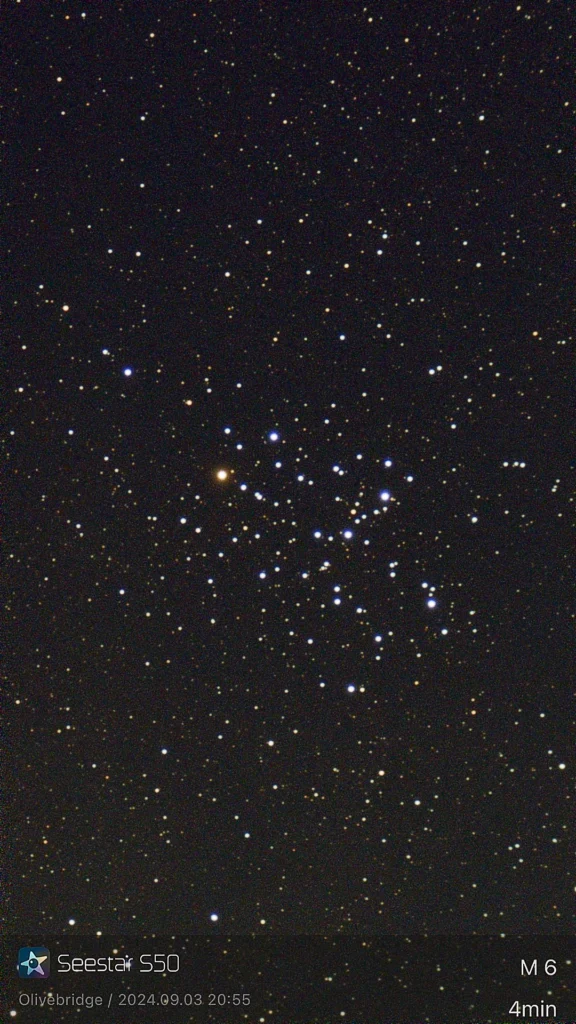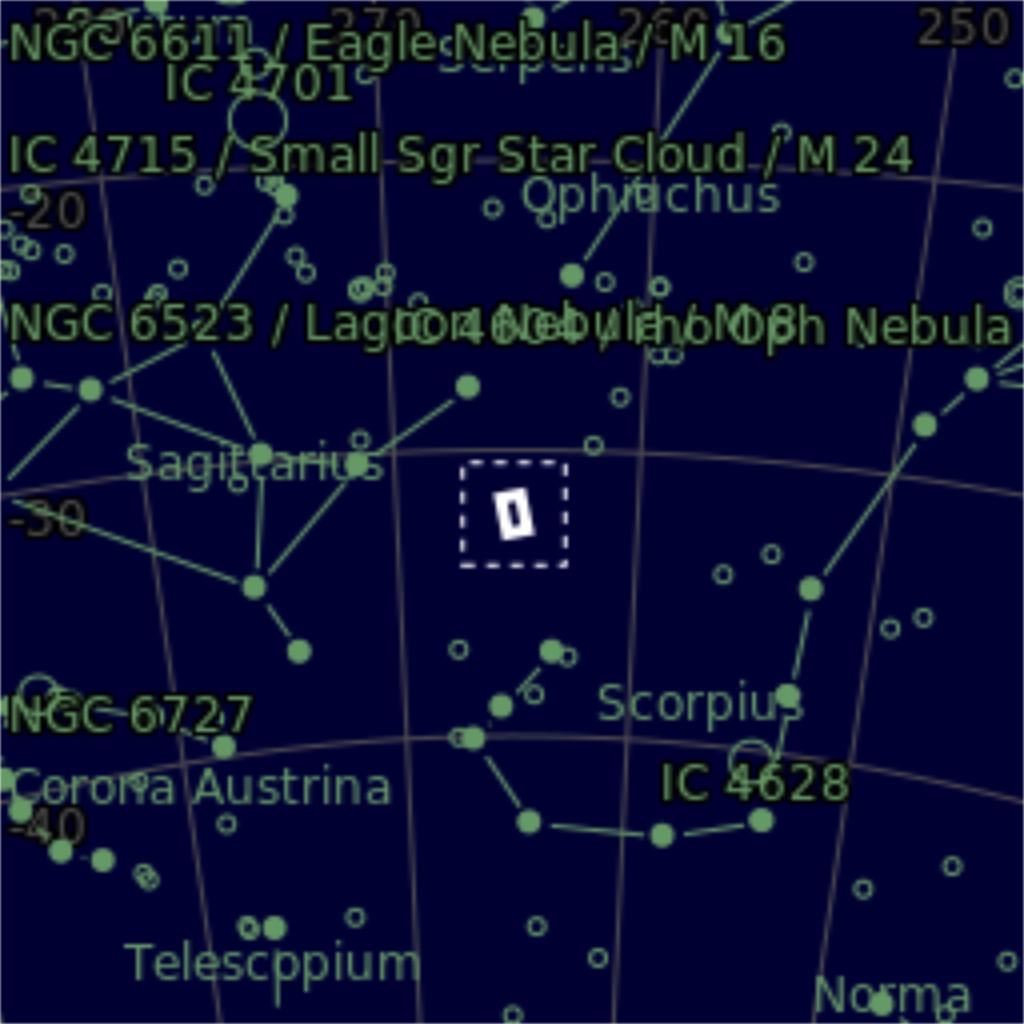| Description | Credit for the discovery is usually given to Jean-Philippe Loys de Chéseaux in 1746. Charles Messier observed the cluster on May 23, 1764, the same date as M5 through M8: "Cluster of small stars between the bow of Sagittarius & the tail of Scorpius. At simple view [to the naked eye], this cluster seems to form a nebula without stars; but even with the smallest instrument one employs for investigating one sees a cluster of small [faint] stars." <--> Located at declination -32°. this is one of the most challenging objects in the Messier catalog to observe from my location in the Catskills, at 42° N latitude. At best, it appears low in the southern sky, well below the trees in my back yard. M6 is the second lowest of the low just slightly west of M7. I decided to travel to the Ashokan Reservoir, which is an hour drive from my house and delivers a very low southern horizon... taking a chance that it wouldn't get wiped out by light pollution close to the horizon. As it turned out, it was fine. Luckily it was pretty much due south, just west of the meridian. The Reservoir is a beautiful dark site, but the ESE horizon is blown out below 20° because of light pollution from Poughkeepsie, 20 miles away, and NYC, 100 miles. My observing location was on top of a dyke holding back a big part of NYC's water supply. Being elevated, it allowed me to observe down to the "true" horizon. I struggled with a cold breeze coming off the water, even in early September. This is one of the more convincing open clusters in the Messier Catalog, and deserves its nickname of the "Butterfly Cluster". The two antennae trigger the illusion. There's excellent L/R symmetry in the "wings", with the upper wing continuing the illusion. The lower wing is not quite so comprehensive, but still adequate. |




